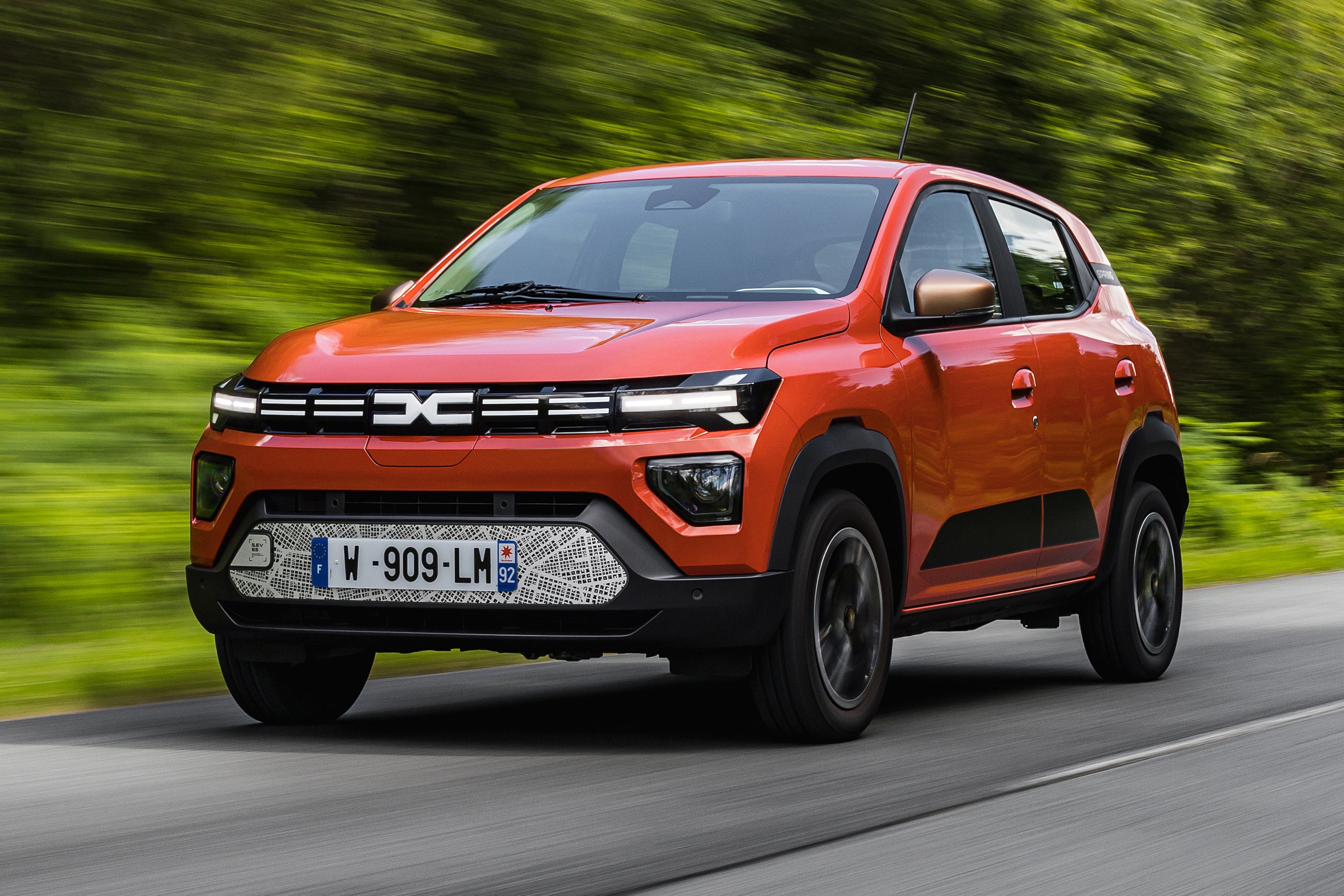Dacia Spring Review 2025: Price, specs & boot space
Written by Matt Robinson
Quick overview
Pros
- The UK’s cheapest ‘proper’ EV
- Reasonably efficient
- Decent boot space
Cons
- Substandard driving manners made worse by cheap tyres
- Entry-level version is very slow
- Poor Euro NCAP rating on pre-update model
Verdict: Is the Dacia Spring a good car?
"The Dacia Spring is comfortably Britain's cheapest 'proper' EV, but you have to be very committed to saving money to put up with the compromises that make that low price possible."
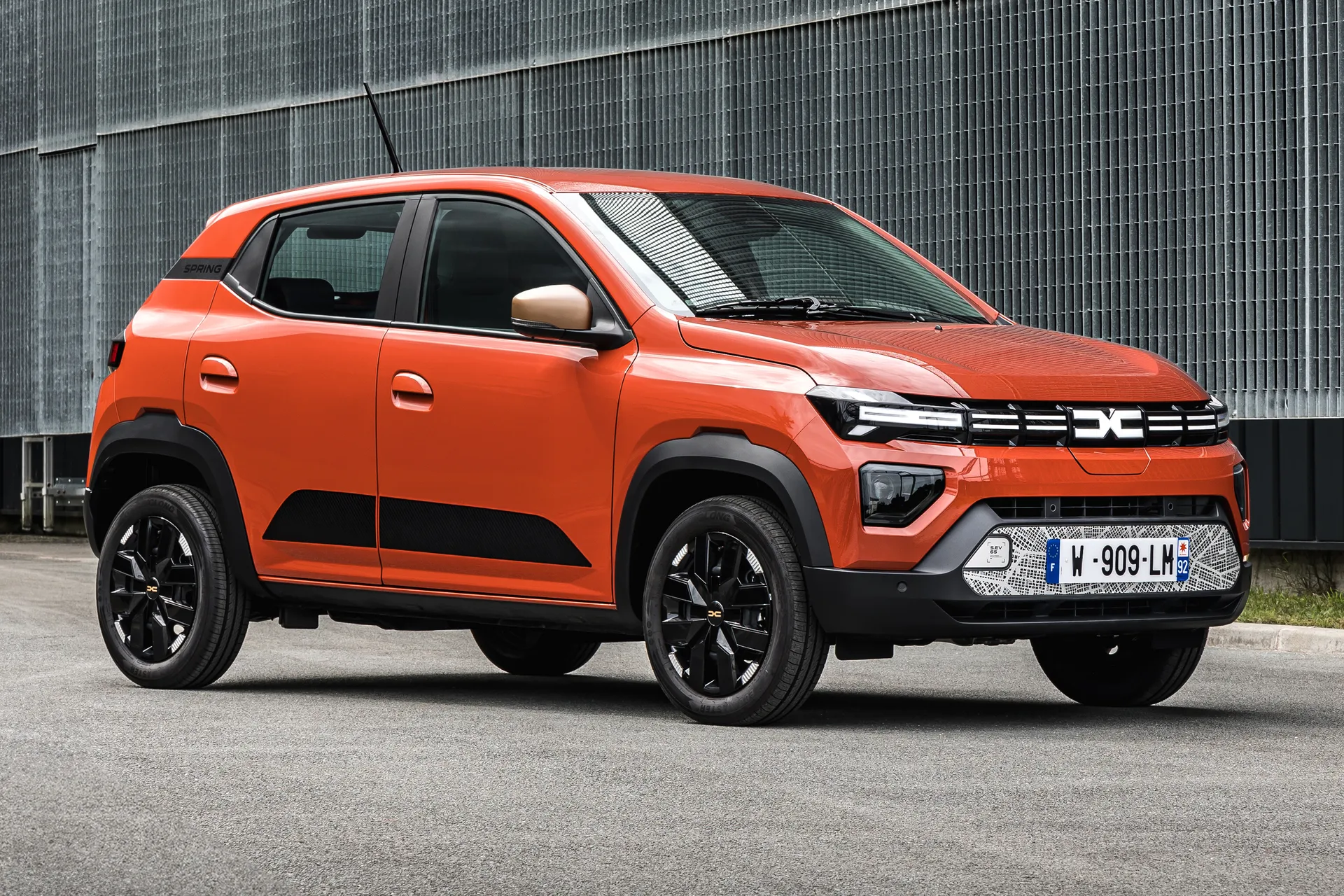
The rest of Europe has been able to buy the new Dacia Spring for the past two years or so, but it's finally available to order in the UK. Just as the company managed with the Sandero – the UK's cheapest car – the Dacia Spring has become the country's cheapest electric car.
Although we've had to wait longer than many other European countries, which could order the Spring as far back as 2021, the car is making its debut here in facelifted form, featuring a much smarter look in and out, plus a few new features.
As a car starting at just £14,995, it isn't just cheap for an EV. At this price point, there's not much else available, full stop. You might be wondering what the catch is, but actually, there are a few. Along with a modest range figure and a low power output, the Dacia Spring feels very cheap inside and out, isn't particularly refined and is quite poor to drive compared with other small cars.
It's disappointing to see budget Linglong tyres fitted to the car, which don't perform very well in the wet. Of even more concern is how safe the car might be in a crash, with the pre-update version of the car achieving just one star when tested by Euro NCAP a few years ago.
Compared to other Dacia models, which are great value but don't feel unduly compromised to achieve their low price prices, the Spring sits quite awkwardly in the range. It's not a car we can strongly recommend, and if this is the maximum you can spend, you're better off with a pre-registered small EV, which might actually cost you a bit less than a brand-new Spring.
Is the Dacia Spring right for you?
If you’re set on buying a brand-new EV and the price is more important than anything else, then yes. The eyebrow-raising entry point for the Spring is its greatest asset, with the pint-sized EV undercutting everything else out there that’s an actual car (more on that shortly), including various Chinese upstarts.
However, you have to remember the Dacia Spring is based on the Renault City K-ZE, a car originally intended for emerging markets whose roots can be traced back to the 10-year-old Renault Kwid. It was only a couple of years into its life that Renault Group started importing it to Europe as the Dacia Spring, and from 2024 that it arrived in the UK thusly branded.
As such, the cost savings relative to slightly more expensive but still cheap electric cars like the Citroen e-C3 will be noticeable. There will be plenty of reminders about where the savings have come from, and also, the Spring isn’t an EV to buy if you’re travelling great distances - the battery range is limited. For mostly urban driving it'll be fine, though.
What's the best Dacia Spring model/engine to choose?
We haven't driven the base, 45PS motor just yet, but we have an inkling that it's worth spending the extra £1,000 on the 65PS motor, as fitted to the Spring we tested. It isn't then a big jump to the Extreme-trimmed car, which comes with a meaningful uplift in equipment yet still only costs £16,995.
What other cars are similar to the Dacia Spring?
At this price, not anything from a mainstream brand you’ll have heard of. The Dacia Spring is cheaper even than the incoming Leapmotor T03, which will cost £15,995, but many might be put off by this Chinese brand being an unknown entity in the UK.
The Hyundai Inster is a similar size, but goes much further on a charge and costs the best part of £8,000 more. The only electric vehicle cheaper than the Spring is the Citroen Ami, and it technically isn’t a car at all - it’s classified as a quadricycle, and will only do 28mph. From the same manufacturer, there's also the Citroen e-C3, but that costs £21,035 and up. The closely related Fiat Grande Panda is a smidge cheaper at £20,975.
Alternatively, you could get an unused, pre-registered small EV like the Vauxhall Corsa-E for around the same amount of money. It'll be less basic inside, more refined, better to drive, go further on a charge and be much safer.
Petrol-powered city cars could also be considered rivals for the Dacia Spring. A Kia Picanto, for example, is roughly the same size and starts from £14,595.
Comfort and design: Dacia Spring interior
"This is one of the places where the Spring's low price tag becomes obvious. The design of the interior is basic, and the materials are not exactly what you'd call premium. You get a reasonable helping of equipment in Extreme spec, though."
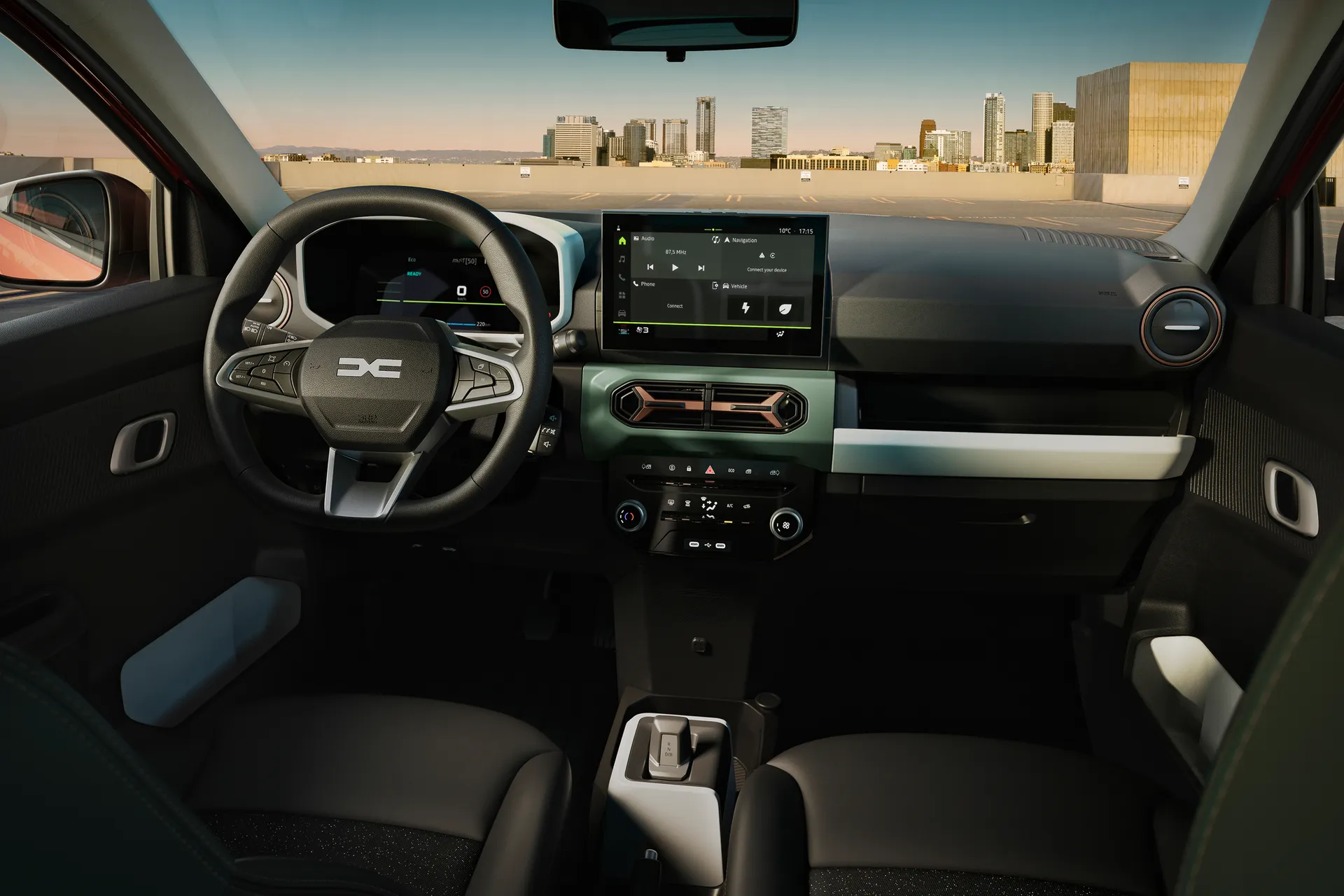
Inside, the new Dacia Spring has an entirely new dashboard that’s better quality and more fashionable than the old model's. It has distinctive SUV vibes, and top-spec models have cool copper-coloured details. The colour of the centre decorative element inside the new Dacia Spring varies according to trim. It's red on Expression models and ‘Dusty Khaki’, or green, on the Extreme version pictured here.
All new Dacia Spring have a 7.0-inch driver display in place of traditional dials. They also have the clever YouClip system, that allows accessories such as lights or bag hooks to be positioned around the cabin. Disappointingly, the airy design you get in pricier electric cars – that take advantage of their electric underpinnings to give you a flat floor and no centre console – is nowhere to be seen in the Dacia. On the upside, there’s room for four tall adults.
The air conditioning and heater controls are of the physical variety, which is very welcome when so many new cars are sticking these into touchscreens. On the subject of the latter, it's good to see such a big display fitted to a cheap car (assuming you've gone for the Extreme).
The quality of the materials used throughout the cabin gives a clear indication of the Spring's bargain basement price tag, with cheaper plastics found in abundance.
Infotainment: Touchscreen, USB, nav and stereo in the Dacia Duster
Only the Spring Extreme gets a touchscreen infotainment screen. It's worth upgrading to the Extreme just for this, as it's a decent size at 10.1-inches, and includes Android Auto/Apple CarPlay connectivity plus satellite navigation and two USB-C ports. We did have some minor bugs with the system on our test car, where it would gradually scroll through the list of available radio stations of its own accord, and very occasionally flicker on the left-hand side.
The 'Media Control' unit on Expression-trimmed Springs just has the one USB port, although there is Bluetooth connectivity. Whichever version of the Spring you go for, don't expect a spectacular sound system - each only has three speakers.
Quality and finish
There's an abundance of cheaper-feeling plastics in the cabin of the Dacia Spring, particularly the trim piece around the handbrake, and the lining for the door pockets, which are also finished in white, so they're unlikely to look particularly great after a few miles. The steering wheel meanwhile is coated in tough plastic, feeling more like something out of a van than a passenger car.
The overall finish of the cabin is fine, at least, and a lot of those plastics should prove hard-wearing over time.
Space and practicality: Dacia Spring boot space
The 308-litre boot is bigger than you’ll find in a city car like the Volkswagen Up, and folding down the rear seats expands that to 1,004 litres. Accessing the boot could be easier, though - the electronic release can be a bit hit-and-miss. There's a certain knack to it where you have to start pulling the boot lid first, then hit the button.
The new Dacia Spring also has a 35-litre front stowage compartment under the bonnet. This is also known as a 'frunk' and is ideal for packing away the charging cables, although you will need to purchase a 'storage tray' as an accessory to use that space. The charge port itself is in the front grille, behind the Dacia logo.
As far as space in the rest of the cabin goes, the Dacia Spring does well for itself, despite still having the compromises of being based on a platform also used for combustion-powered cars. It's only a four-seater, but that's normal for a car of this size, and each of its occupants will have a decent amount of space and headroom. The door pockets are of a good size, and there's a fairly deep tray by the gear selector for storing things like phones or house keys.
There's something vaguely representing a cupholder in each of the front door pockets, but we wouldn't be confident about storage a fresh hazelnut latte in there. You're better off buying one of the accessory cup holders that attaches to the versatile YouClip system, of which the Spring has two.
Handling and ride quality: What is the Dacia Spring like to drive?
"The Dacia Spring isn't particularly pleasant to drive, with disappointing grip in damp conditions due to its budget tyres, and a lot of body roll. The low level of straight-line performance isn't as much of an issue as you might expect, though."
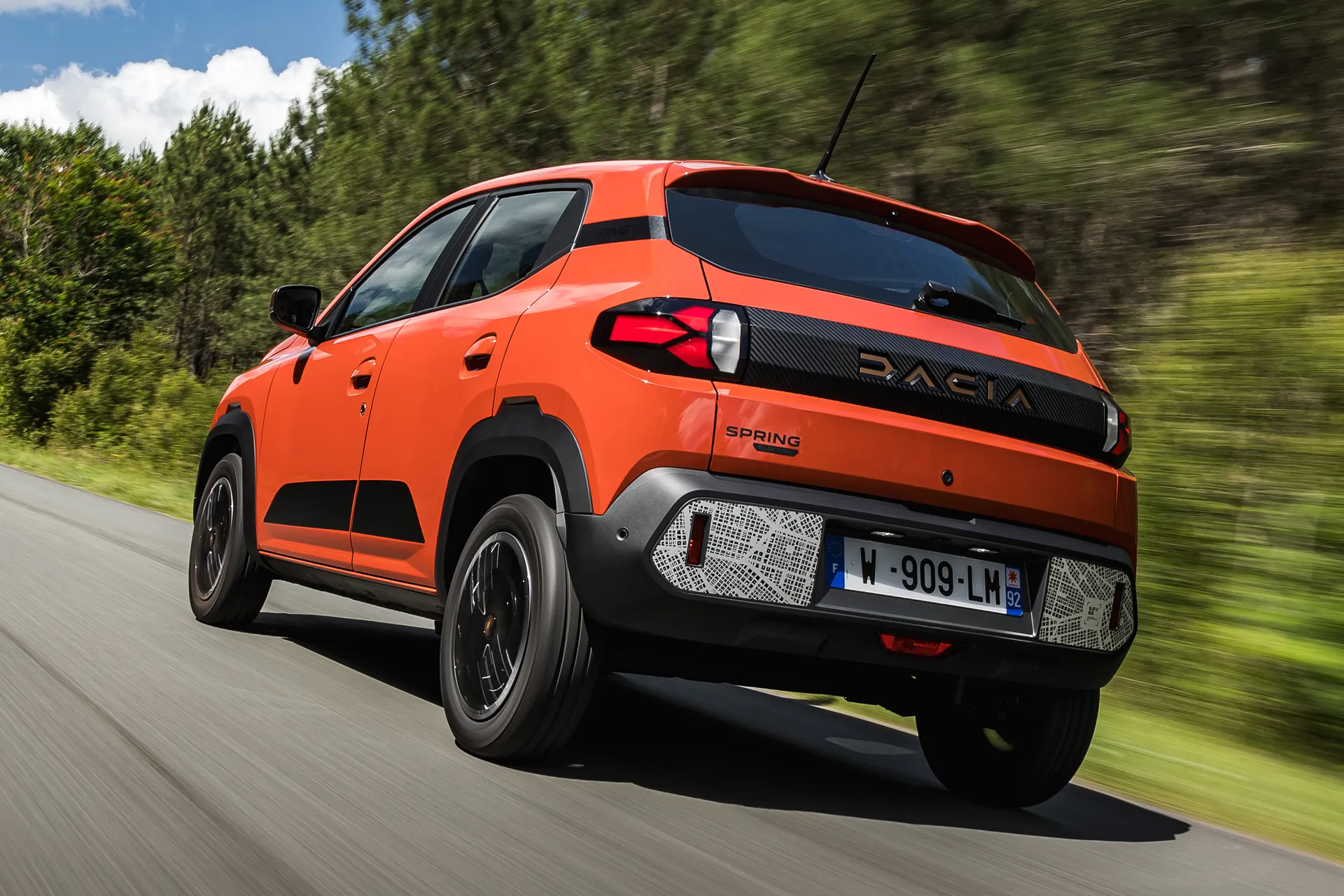
19.1 seconds. That's how long it takes the base 'Electric 45' Dacia Spring to accelerate from 0-62mph. With just 45PS to its name, the entry-level Spring is, so far as we can work out, the least powerful car currently on sale in the UK. The Citroen Ami, for reasons outlined earlier, doesn't count. Thankfully, the Spring isn't just light for an EV, it's generally a very lithe car by modern standards, tipping the scales at just under a tonne.
That means if you upgrade to the Electric 65, the 65PS motor doesn't have too much car to move around, so performance is adequate despite the power figure still being modest. A 13.7-second 0-62mph time is still very leisurely, but arguably of more importance is the 0-30mph figure of around four seconds. It's brisk enough off the line that the Dacia Spring feels more than sprightly enough around town, and it's only when you get onto national speed limit roads that it starts to feel a bit sluggish.
The top speed is the same for both versions at 78mph, so at least you'll be able to cruise along dual-carriageways at the national speed limit, once you finally get there.
The fact that it's a bit slow doesn't worry us at all, really. What's of much greater concern is the way the car handles, which is poorly, thanks in no small part to the decision to fit the Dacia Spring with narrow, budget Linglong Greenmax EcoTouring tyres that struggle badly even in mildly damp conditions. We're yet to try a Spring on a really wet road, but we're not sure we want to.
Even when the roads are just a bit greasy and you're only using partial throttle, the Dacia Spring has a tendency to spin up its front wheels, causing the traction control to dramatically intervene. Meanwhile, if you take a corner a bit too quick but at a speed any other small car would cope with just fine, the Spring has a tendency to wash wide at the front, all while leaning over quite significantly. You could just drive slower, and we'd imagine most Springs will spend their time slowly driving around congested urban areas, but we'd always worry about how quickly the car is brought to a stop when braking during the wet.
Despite the fact the suspension is quite soft, allowing the body of the car to lean excessively, the Dacia Spring isn't always that comfortable, particularly when you're going over bigger speed bumps, where proceedings take a pogo stick-like turn. The steering meanwhile is slow and quite vague, and while driving in a straight line, there was a near-constant (but admittedly subtle) wiggling from the steering wheel, presumably from the thin tyres and narrow track causing the car to tramline.
We also found that the drive selector needed a few extra pushes when changing between drive, neutral and reverse, which makes three-point turns especially frustrating. The very low quality of the reversing camera makes the experience all the more painful.
What batteries and motors are available in the Dacia Spring?
There’s only one battery available in the Spring. It has a capacity of 26.8kWh, which is very modest by modern EV standards. There are plug-in-hybrids that have similar-sized and in some cases larger batteries.
You get a choice of two different motor outputs. The entry-level ‘Electric 45’ motor makes - as implied by the name - just 45PS, little more than a classic Mini, while the ‘Electric 65’ motor is good for - you guessed it - 65PS.
Dacia Spring range: How far can you travel on a charge?
According to the WLTP cycle, the Dacia Spring can travel up to 140 miles on a full charge. That's not a particularly impressive number, particularly as it's a lab-obtained figure that doesn't reflect real-world driving very well.
The Spring did well for itself during our test, though, averaging 3.9 miles despite us driving it at a cold time of year and taking it on several motorway/dual carriageway journeys which normally aren't flattering for EVs. This average would get you a range of just over 100 miles, so with a greater emphasis on the kind of urban driving the Spring is intended for and warmer conditions, over 120 should be possible.
That's still a lot less than you'll manage in a Citroen e-C3, though. It has an official range of 199 miles, which should equate to comfortably over 150 miles in reality. But then again, the Spring is, as we've already said, a lot cheaper.
Refinement and noise levels
Around town, the Dacia Spring isn't so bad in terms of noise, but as soon as you get it beyond 40mph or so, it's a different story. There's a lot of wind and road noise, which could become tiring over a long drive. That said, because the Spring isn't really intended for drivers racking up a lot of miles, this isn't the end of the world.
Safety equipment: How safe is the Dacia Spring?
Being based on a car originally intended for emerging markets, it sadly isn't much of a surprise to see that the Dacia Spring has a poor Euro NCAP safety score. When tested in 2021, the car scored just one star, made up of a 49% score for adult occupants, 56% for child occupants and 32% for safety assistance features. It does poorly in terms of protecting any pedestrians unfortunate enough to get hit by it, with a 39% score for vulnerable road users.
The Euro NCAP report does at least note that the passenger compartment "remained stable" during the frontal offset test, but readings from crash-test dummies indicated poor protection for occupant's legs and hips.
It is worth noting that the facelifted model sold in the UK does have lane-keeping assistance, which wasn't available on the Spring when it was tested in 2021. That said, we can't imagine its inclusion alone improving the overall star rating. Also on the safety technology front is automatic emergency braking (AEB) - which works only for other cars, not pedestrians - traffic sign recognition and a driver alertness monitor.
Although it wouldn't change the safety rating either, better tyres would almost certainly make the Spring a safer car to drive.
Dacia Spring charging times: How much does it cost to charge?
"The Hybrid 140 model should be the economy star of the range, but it's little better on consumption or emissions than the petrol-only model."
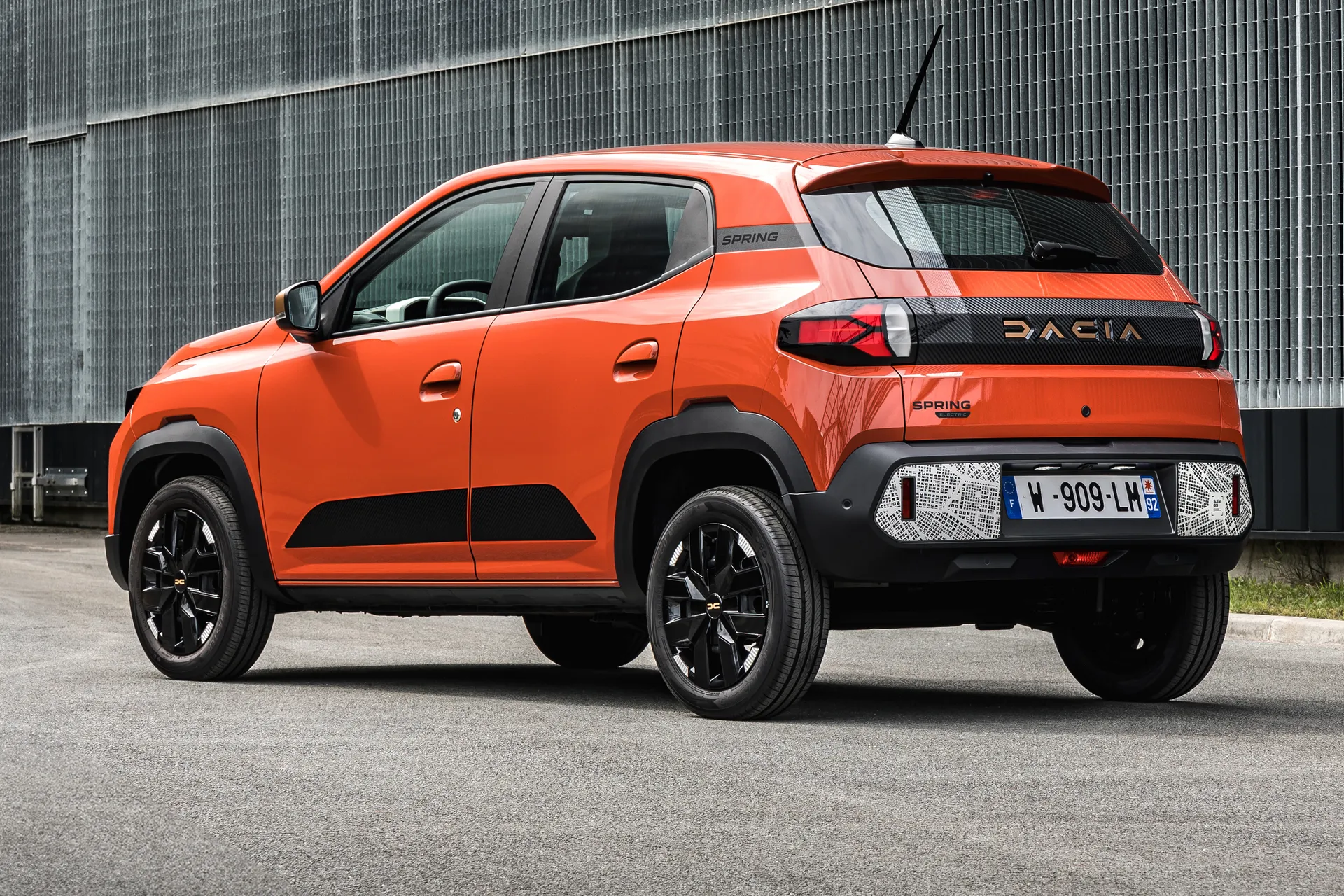
It’ll take about four hours and 45 minutes to fully charge the Spring from empty using a 7.4kWh wall box charger, and just over 11 hours if you’re game to plug it directly into a three-pronged plug socket, but that’s not something we’d recommend doing too often. Aside from the length of time it takes, this isn’t great for your home electrics, and you’ll have to pay an extra £319 for the right cable from Dacia.
Based on the average current per kWh cost of electricity, it'll cost around £7 to charge the Spring using either method. Expect that to be at least three times more expensive if using a public rapid charger.
On that front, the Spring has a fairly low DC rapid charging capacity of 30kW, but as the battery isn't that big, it takes only 35 minutes to achieve the benchmark 10 - 80% charge. That's assuming you get the full 30kW, though - during one rapid charge we experienced 16kW, making for a lengthy stop.
Dacia Spring reliability and warranty
As such a new model for the UK, it's hard to tell how reliable the Spring will prove in time. That said, the Dacia brand has long performed well in the HonestJohn Satisfaction Index, finishing close second to Lexus in the most recent survey.
It'll help the Spring's cause that EVs have far fewer moving parts than their combustion-powered counterparts. Plus, the warranty can be extended from the standard three years/60,000 miles to seven years/75,000 miles with the new Dacia Zen program so long as the car is serviced at Dacia dealers.
Regardless of whether you do this, the battery has a separate warranty ensuring you'll have at least 75 per cent of the original capacity left in it after eight years or 75,000 miles.
Dacia Spring insurance groups and costs
As with any car, the cost to insure a Dacia Spring will vary significantly depending on multiple factors including your age, driving experience and where the car is kept. Electric cars are generally a little more expensive to insure than petrol and diesel-powered equivalents, however, and that's reflected in Spring derivatives occupying groups 24 and 25. For comparison, the exclusively petrol-powered Kia Picanto occupies groups 3-10.
VED car tax: What is the annual road tax on a Dacia Spring?
At the time of writing, the Spring was exempt from paying any Vehicle Excise Duty (VED), but that's due to change from April 2025. At that point, all EVs will be liable for a flat rate of £190 per year.
Dacia Spring price
"Even in the absence of government grants, the Spring is a seriously cheap EV, starting at just £14,995."
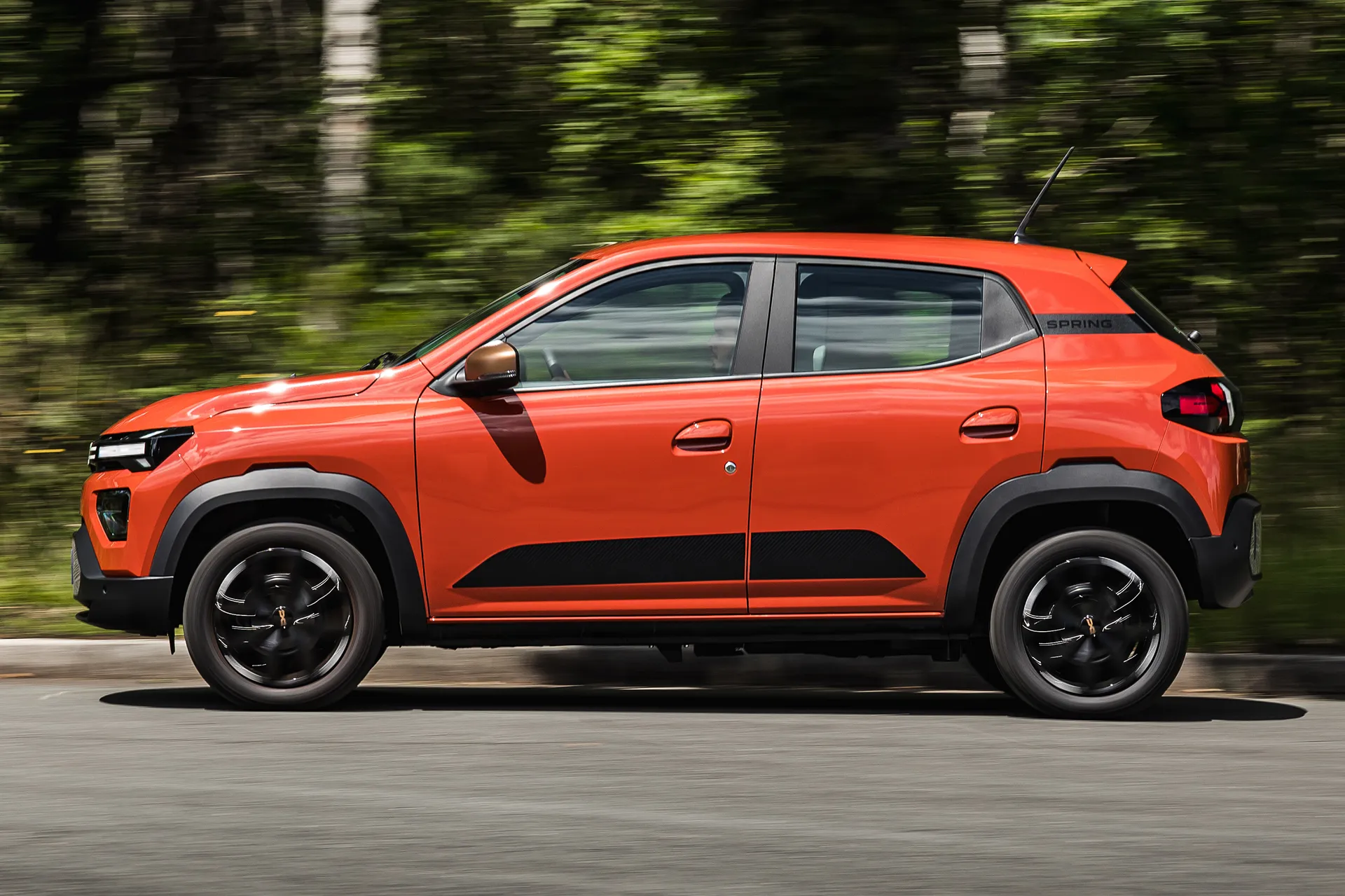
The headline-grabbing £14,995 starting price for the Spring gets you the entry-level Expression with the Electric 45 Motor. This rises to £15,995 is pairing the same trim level with the pokier Electric 65 powertrain, while the Extreme (which can only be combined with the Electric 65) is £16,995.
For those after a cheap electric van for hauling modest payloads, the Spring Cargo costs £14,995 excluding VAT and qualifies for the government's £2,500 plug-in van grant.
There are already plenty of used Dacia Springs available on heycar which have barely been driven yet offer significant savings on a brand-new example.
Trim levels and standard equipment
The Spring has a simple trim structure consisting of two tiers. The entry point is Expression, equipment for which is basic, rear parking sensors, electric windows (for the front only) and manual air conditioning being about as snazzy as the spec list gets.
The upgrade to Extreme spec could well be worth it, then, especially if you're already set on the Electric 65 Powertrain, which is the only option for the range-topping trim. The Extreme gets electrically adjustable door mirrors with a copper finish for the caps, electric windows in the rear as well as the front, a 10.1-inch touchscreen infotainment system, a rear parking camera and sensors front and rear, lane keep assist.
The wheels are still of the steel variety, but at 15 inches in diameter they are an inch bigger than the Expression's, and they come with different trims.
Alternatively, there's the Dacia Spring Cargo, billed as "the UK’s most affordable compact electric van". It's an N1 category commercial vehicle which removes the rear seats to give a 1,085-litre load bay that can accommodate payloads of up to 370kg. In terms of its standard equipment, it's broadly similar to the Electric 65 Extreme.
Ask the heycar experts: common questions
What is the Dacia Spring's UK price?
Where is the Dacia Spring made?
When is the Dacia Spring available in the UK?
Get our latest advice, news and offers
Keep me updated by email with the latest advice, news and offers from heycar.
By submitting you agree to our privacy policy
